There are many genres of sea glass, whose differences are based on the source from which they came or their sizes, shapes and/or textures. (Refer to other blog posts for more information on this.) Artisan sea glass – the origins of which stem from decorative glass works (paperweights, chandeliers, lamp shades, vases) – showcase such an incredible array of designs, colors and shapes that they are an all-time favorite among sea glass collectors.
Perhaps the most famous artisan sea glass found in North America is from Davenport Beach in California.


People began hearing about this sea glass in the early 2000’s and the book, Santa Cruz Sea Glass, by Krista Hammond, brought the myth of fabulous sea glass found on Davenport Beach to life. Since then, its’ beauty and rarity – as well as the immense difficulties most beachcombers encounter in collecting shards – has made Davenport sea glass some of the most sought-after in the world.
So, what are the origins of such beautiful sea glass?
They are the wave- and sand-smoothed trimmings and leftovers used by glass artists based at Lundberg Glass Studios, which is located directly across the road and up the hill from Davenport Beach. The studio has been producing some of the finest art glass in the world since it was founded in 1970 by brothers, Steven and James Lundberg. The company is still in operation today, managed by Rebecca, Stephen’s son, James’s wife, who is a talented artist and glassblower in her own right. Lundberg Studios is famous worldwide for its art nouveau-style vases, lampshades, perfume bottles, paperweights and yes, resultant sea glass.


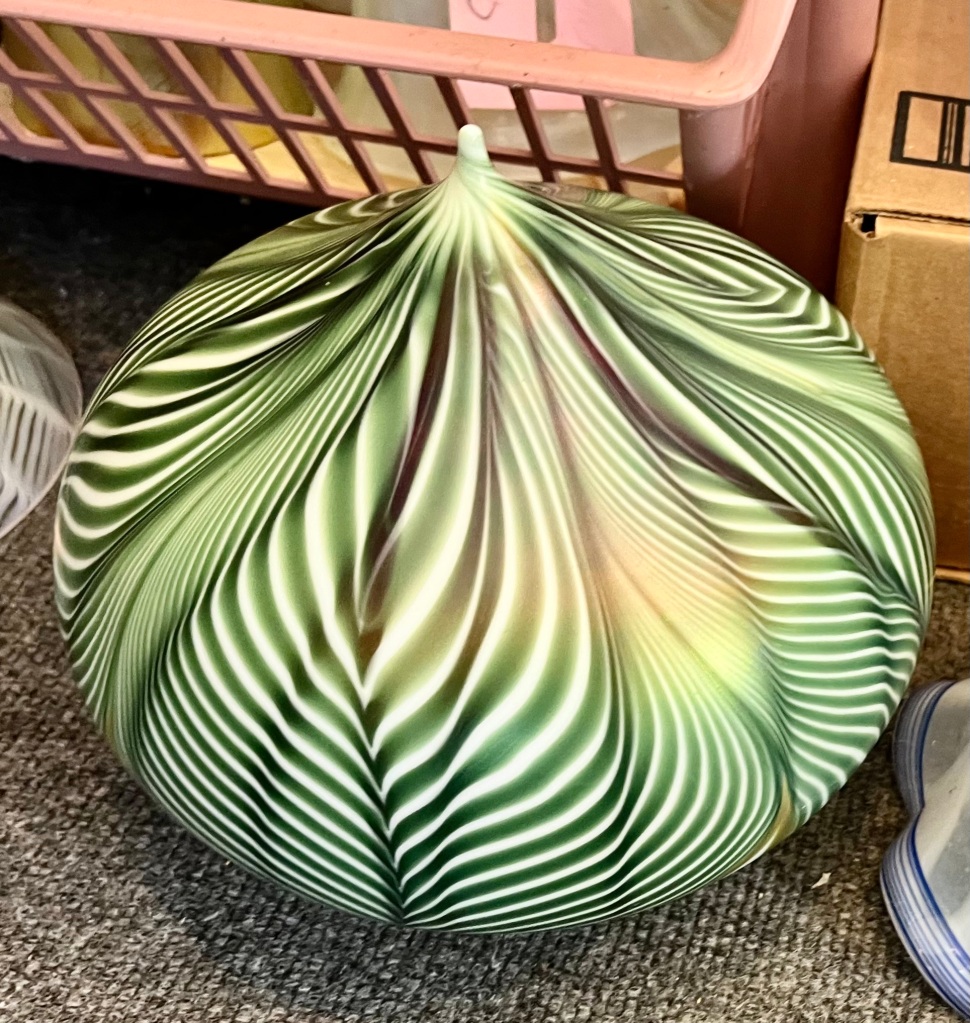

Their ‘world weights,’ which portray the earth in stunningly accurate detail, are very popular.
The hillside studio is situated next to the San Vicente Creek. Remnant art glass ‘trimmings’ are stored in containers located just behind the studio by the creek.
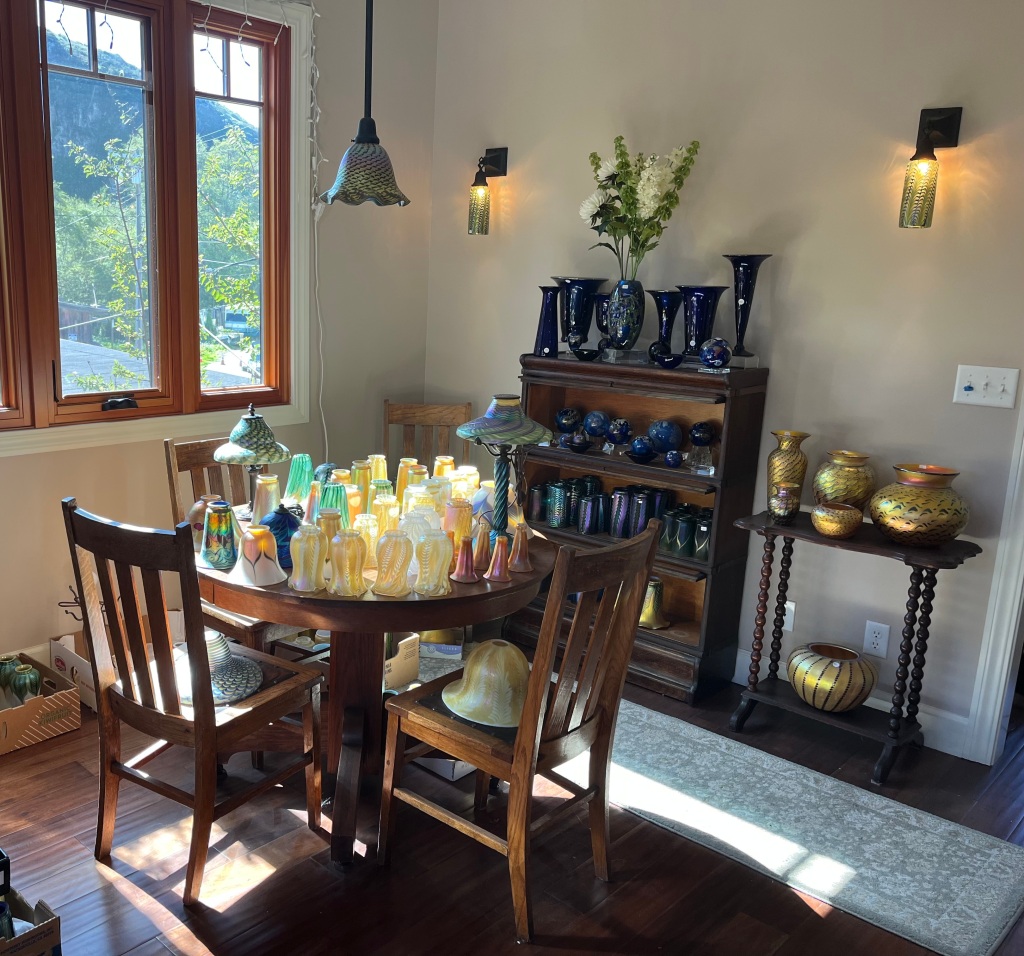
Legend has it that in the late 1970s, a heavy rainstorm caused the creek to rise, overflow, and flood, sweeping the containers with remnant glass fragments down the creek, onto the beach, and into the ocean. Years spent tumbling in heavy surf and coarse sand have yielded exquisite shards of smoothed, frosted sea glass.


The shards were first discovered by surfers and beachcombers during the stormy winter months decades ago when pounding surf rolled in and swept layers of sand back with it, which exposed layers of rocks and gravel hash harboring the treasured glass.
When conditions are right, and the ‘hunting’ is good, the beach is lined with people, shovels in hand, digging down to the gravel layers.


Or else, in wet suits and shin guards, they can be seen near the ‘pit” (a spot near the creek’s opening) fighting the waves, hoping to scoop up the choicest ‘nuggets’ being tossed in by incoming waves. ‘Scoopers’ must be quick and agile because nuggets disappear into the backwash as fast as they appear.
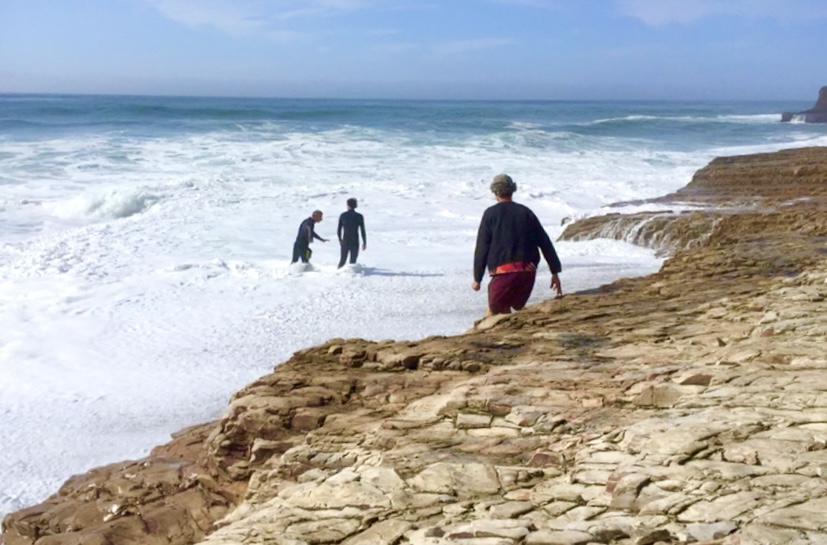
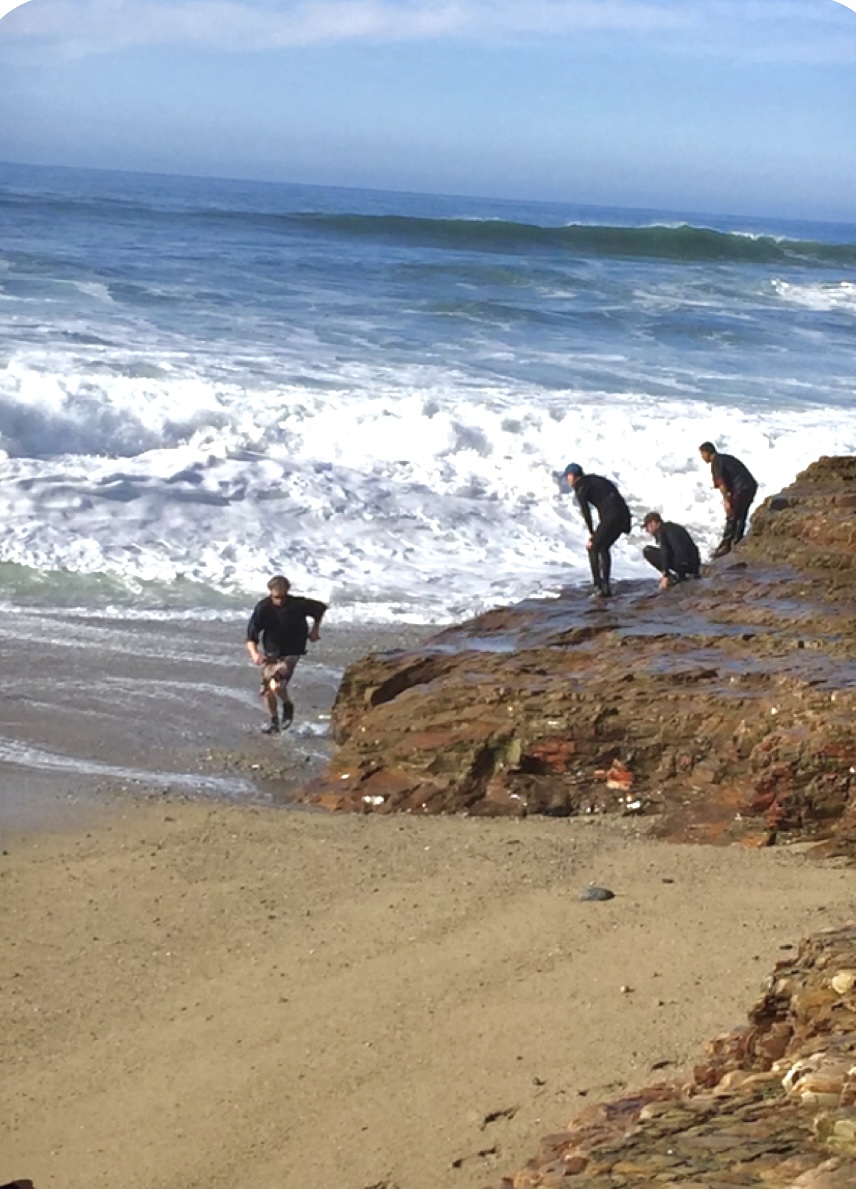
With waves sometimes 15-to-20 feet high and large rocks roiling around in the surf, this type of extreme sea glassing is not for the inexperienced, the out-of-shape or the faint-hearted for it is truly a dangerous undertaking. (Personally, I think these guys are nuts, risking their lives for a piece of sea glass, though I do understand the adrenaline rush.) Many leave the beach nursing bruises, cuts and even broken bones. (https://rareseaglass.com/2017/08/27/is-it-dangerous-to-hunt-for-sea-glass-at-davenport/)
More often, however, beachcombers find little to no glass at Davenport. This is especially true in the calmer spring through fall months. But also, even in a wintertime with no strong tides or the big waves needed to disrupt the gravel, you will probably go home empty-handed.
The nicknames locals use to describe the shards are creative and fun. Along with nuggets, bubbles, and boulders, you may find “eyeballs,” “mushrooms,” “onions,” and “hot lavas.”


There are also cane and rod shapes. and heavenly iridescent shards and UV pieces that transform under a black light into brilliant neon greens, periwinkle blues, and bright oranges.


.
The originality and beauty of Davenport sea glass, along with their rarity and the difficulty people have in finding it, has elevated it’s status to ‘legendary.’ The demand among sea glass collectors is extremely high yet inventory remains low as few beachcombers will part with their finds. So, when true Davenport sea glass does occasionally goes up for sale, the best or rarest shards can command hundreds of dollars.
Sadly, to fill the void, unscrupulous vendors have been seeding the beach with newer trimmings that the studio sells for $5-$25. This glass is not as well-frosted and has sharp edges, is shiny, and/or is of negligible sea glass quality. Also, the colors and designs can differ markedly from the earlier glass. Such shards are not worth the money these vendors ask for, especially when you can head up the hill and purchase your own $25 bag of glass trimmings at the studio. (Or you can contact the Studio and order and have them shipped).


I recently hit up Davenport with IBC alum and Beach Buddies, Robin, and Gail, for a day well spent. We met with experienced local combers Harmony and Monica, had a delicious lunch at the Roadside Restaurant, visited with Rebecca at Lundberg Studio for a tour (and purchases ) then suited up with dive booties for an afternoon trying our luck at the beach.





Know that even on a slow, windless beach day, with barely a wave in sight, the occasional shard can still be found sans a wetsuit or shovel. But even if you can’t find sea glass, the beach is generous with its beautifully colored and designed sandstone rocks. Like during this last visit, I collected several of those and then, wandering off by myself, I came upon a lovely, fairly worn shard, sitting atop the sand, waiting just for me; as if to say, “Welcome! Pocket me and be sure to share my origin story.”
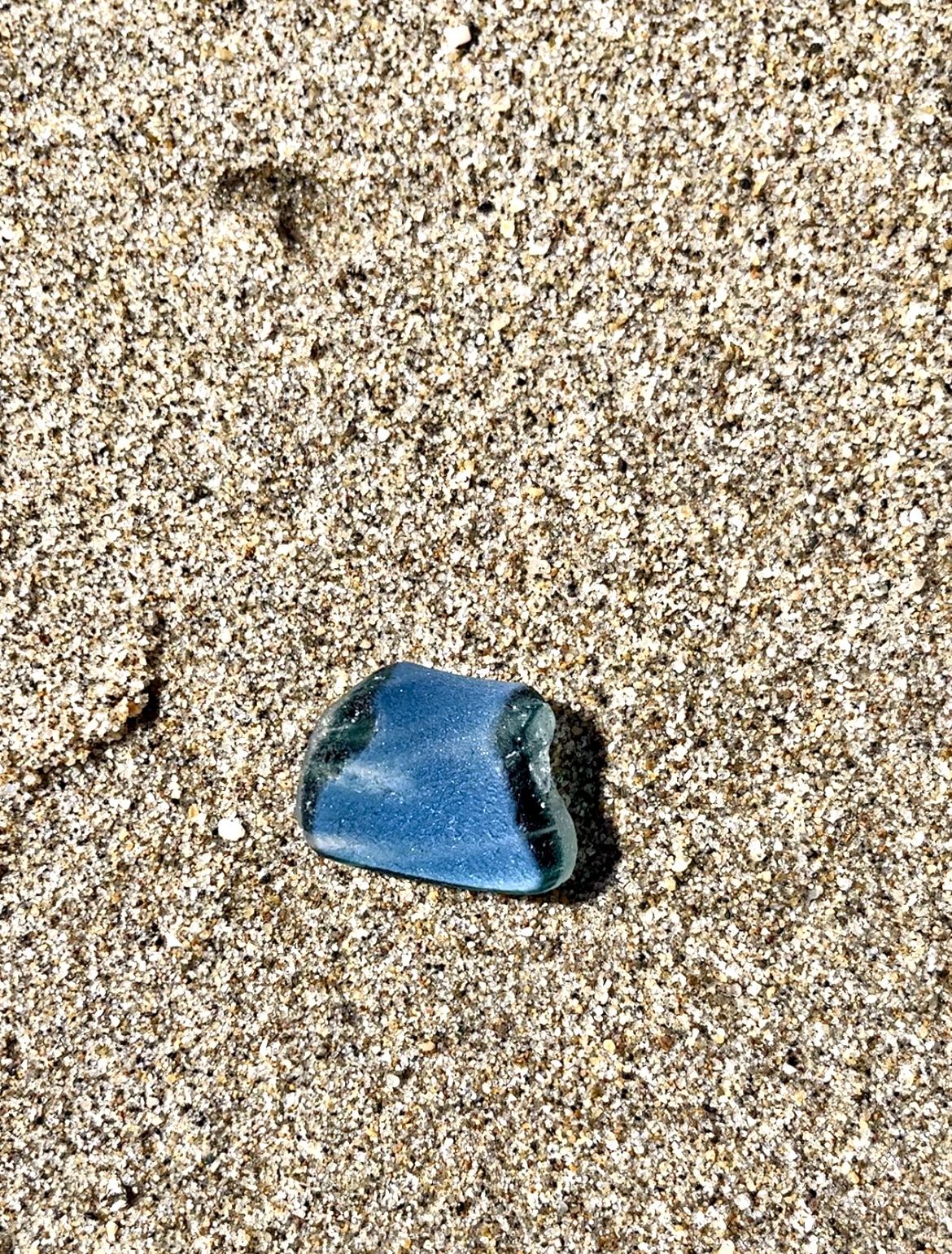
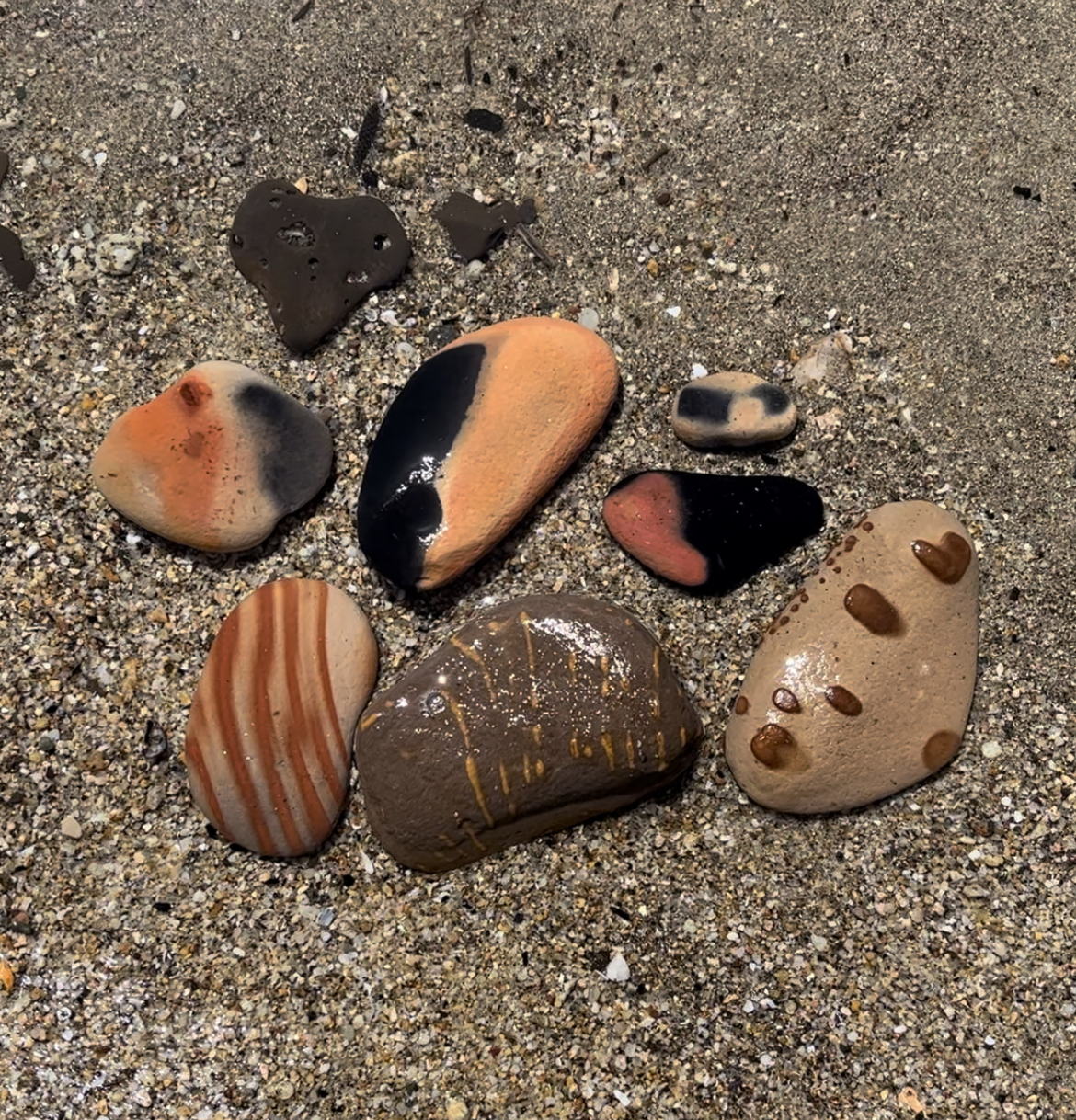
HAPPY COMBING!

Photos by me and Gail Benjamin


Dr. Beachcomber, along the same line, do you have any information about sea glass beach in Russia? What created all of its glass? It seems to be very chunky. It is along the Sea of Japan, so what is the source of all the glass on that beach? Thanks for any help.
Hi Sherri!
I have seen those photos of sea glass stacked high atop each other on Russian beaches as well, and I’m always a bit of a skeptic until I go to see a place myself. However, Russia has dumpsites throughout the country as do we all, and don’t know how popular Beachcombing is there, particularly on the outer beaches, so I wouldn’t be surprised if they had beaches filled with Seaglass or at least broken glass. (I’m not sure if the quality would be such that I would call it Seaglass). on the other hand so much of these pictures. Pictures seem contrived in terms of content, amount and colors, so I just look at them and then move on …there’s so much on social media these days that is contrived and phones. Even in the beachcomb world.
I am planning a trip to Japan next year – I know it’s a great region for beachcombing for Fishing Floats and Seaglass and shells. Lots settlement history,,lots of islands, lots of shorelines, so I think many of the photos you see from there – many of which are from consummate Beachcombers who spend a lot of time exploring and gathering things are on the up and up. I’ll let you know after my trip as I plan to meet up with some of them. xx
Thank you for this. I have been purchasing sea glass from some Russian young ladies who say they are getting it from the Sea Glass Beach in Russia. They also told me that Etsy closed all accounts of Russian artists once the war started. They are finding some beautiful pieces that are like flash glass but much chunkier. But it is smooth and frosted. And just some really unique colors. But they have no knowledge of where the glass originiated. And much better priced. I will let them know this info. But knowing you, you will find out even more. Thank you.
Here’s the deal: there are a lot of shisters selling on the internet right now, trying to make a buck off the unsuspecting. I rarely buy anything from anyone unless I personally know the seller or they have been verified by trustworthy beachcomb buddies because it doesn’t take much to tumble a piece of broken glass and make it look finished (so why not by a tumbler, do it at home and save yourself $)?) Unless you’re very, very skilled at it, it’s hard to detect what glass is ocean-tumbled and what is machine-tumbled. On the other hand, if it’s pretty to you, and you personally love it and are willing to spend the money on it, then who cares? I have more qualms on supporting anything that comes out of Russia right now, then whether the sea glass who are buying is fake or genuine.
I agree with everything you have said. These 2 ladies sell from a FB site called Tidelines and Beach Bounty. The Admin. is Joni Caulkins. She and I have had lots of conversations online about Japanese fishing floats. She lives in Alaska and sells the floats online. I have bought a few. Very knowledgeable about what she sells. It is a seller approved only group. I would appreciate your opinion on what you see these girls selling if you had time. The 2 who sell Russian sea glass are Julia Seaglass (I know…) and Japanseaglass Taitian. It does take a little time because Joni has to approve you. https://www.facebook.com/groups/TidelinesBeachBounty
Sorry, misspelled ‘Shyster’
Thank you for sharing this information with me
I do love the glass you have posted.
How do I see what you have in stock?
Awaiting your reply
J.S.
I dont’ at this point in time sell any sea glass from ny collection if that’s what you mean. but if you check out my posts on YouTube Facebook and Instagram, I show my Seaglass treasures all the time.